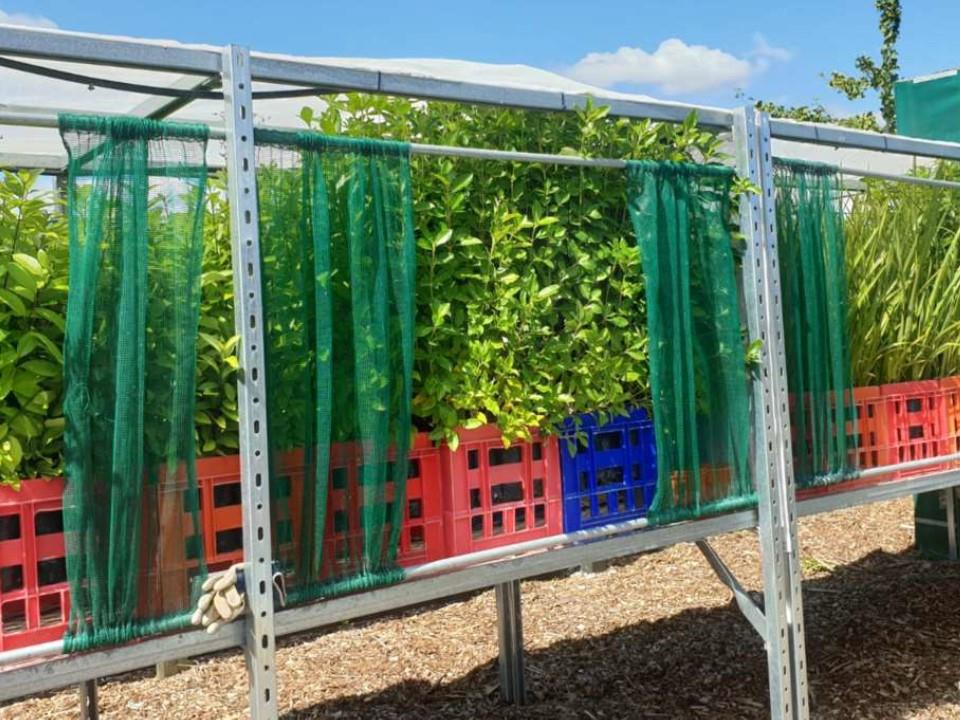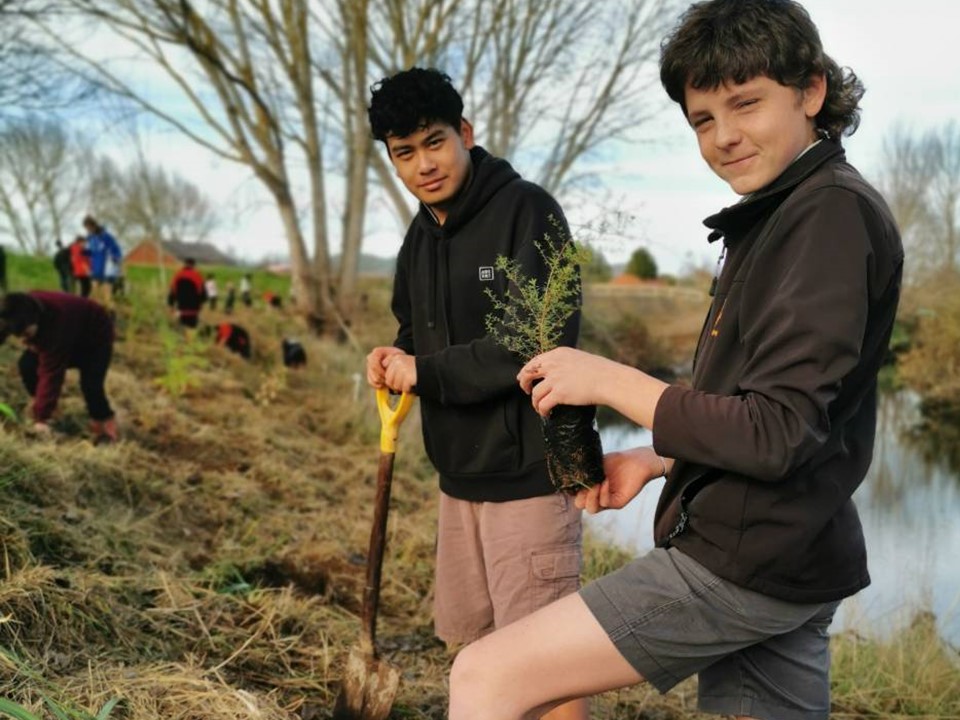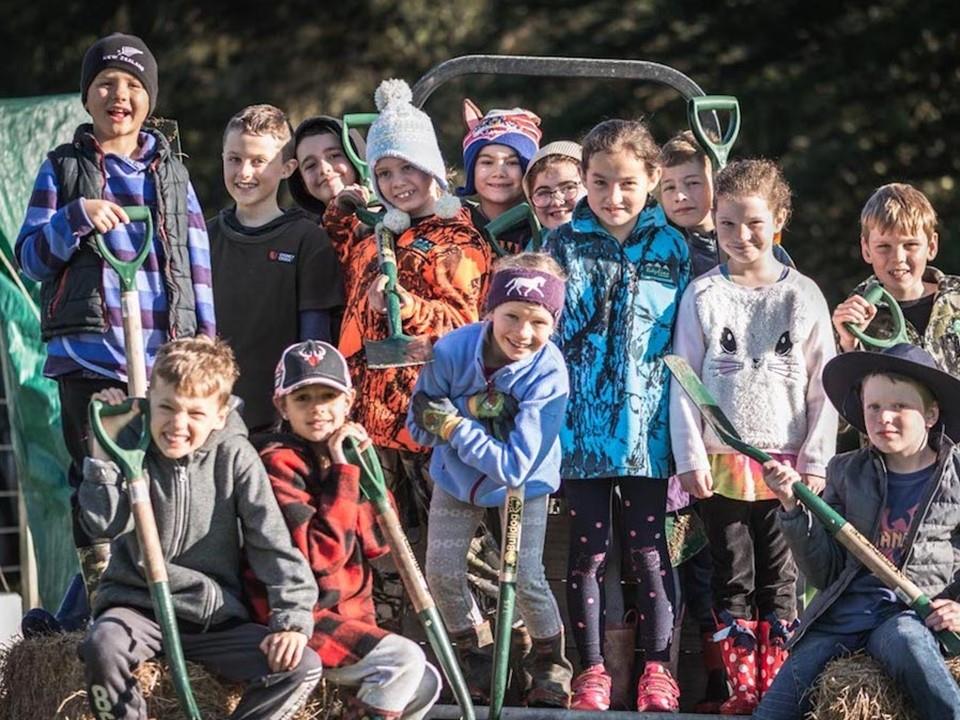The act of sinking your hands in freshly tilled soil to plant new life creates a sense of incredible achievement. Trees for Survival is a Rotary founded programme inspiring young environmentalists - Kia tupu ai enei kakano hei rakau nui - that St Johns Rotary has supported since 2009 as part of the Environment and Science Committee. This is a programme widely supported by Rotary clubs across many schools.
 |  |  |
The St Johns Rotary support until now has been for Glendowie Primary who have raised seedlings and planted these in rural areas on private land with the club sponsoring the seedling, the bus for the annual planting programme in the countryside with members along in support. From 2021 the club will be sponsoring Churchill Park School in the Trees for Survival programme for planting in Churchill Park as part of the Auckland Council Adopt a Park programme. The advantage of this is that the students will be able to see ‘their’ trees grow over the years whereas few would see the progress of plantings done in rural areas.
Participating Churchill Park Primary students receive an education programme in two parts; the first is classroom lessons some lessons about the environment and the impact of growing trees including topics such as biodiversity, improving stream flow and water quality, erosion control and reducing carbon emissions. The second aspect is about working together as a team to grow and plant the trees. The curriculum is supported by a Trees for Survival Field Officer who will visit the school six times each year to give horticultural lessons and give and vice and help with the potting and planting of the seedlings.
Trees for Survival provide the school with a Shade House, (constructed by the Auckland East Mens Shed), and the students receive about 1,000 seedlings in August to pot, care for and grow for planting the next year. The seeds are eco-sourced and then professionally germinated before the seedlings are sent onto the schools. The agreed planting site is determined ahead of time so that the seedlings (plants) are appropriate for that site. The students will plant the previous year’s seedlings (now young plants) between May to August and then monitor and maintain the site for the next two years, possibly working with the Council pest control group as needed.
In addition to the educational aspects, teachers report that the programme has wider well-being implications in that while younger students are most stressed by Covid-19 at present, the older students are most concerned with the implications of climate change and being able to do something practical like this to help the environment has mental health as well as physical benefits.
There are a 141 primary schools in the Trees for Survival programme with 97 in the Auckland area with more schools joining each year. Over 1.5 million natives have been planted nationally since 1991 (86,000+ in 2020) by 3,000+ students. In most schools there is a core group of 30 students in any one year in the programme.
The commitment that schools make in joining the programme is for 5 years (two-year lead-in and 3 years maintenance) but virtually all schools have adopted this environmental programme long-term (ongoing). The costs are about $4,000 for the Shade House and first year seedlings, and $1,800 thereafter although most receive additional sponsorship for transport to planting sites if needed.
Sponsorship for the programme comes from Rotary clubs and also individual and business sponsors who ensure the participant schools can continue and enables the expansion of the programme to new schools where there is high demand to join with 20 anticipated in the next season.
For more on the Trees for Survival programme please go to www.tfsnz.org.nz
Contacts:
Supporting St Johns Rotary email stjohnsrotary@gmail.com
or for TFS generally:
Dennis Millard, National Manager
M: 021 66 4141
Trees for Survival Charitable Trust Inc cc28548
Also, the programme featured in the TVNZ ‘Rural Delivery’ programme 22nd May, and can be viewed here
https://www.tvnz.co.nz/shows/rural-delivery/episodes/s16-e9 (2nd story)
https://www.tvnz.co.nz/shows/rural-delivery/episodes/s16-e9 (2nd story)
Pictures used are from Trees for Survival.